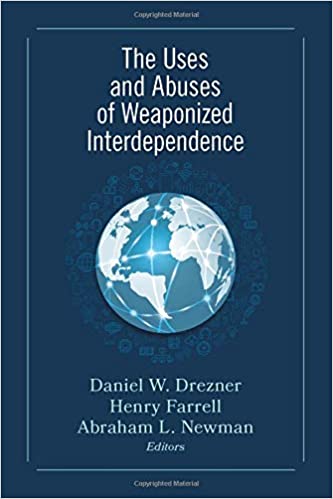When we initially wrote our article on weaponized interdependence, we hoped that it would help people think more clearly about how economic coercion was changing. We did not anticipate either the reception that the argument has gotten or how dramatically the changes that we wanted to understand would accelerate, thanks to factors including the deterioration of relations between the United States and China, the eagerness of the Donald Trump administration to deploy coercion where it could, and contestation over global supply chains in the wake of the COVID-19 pandemic. As these unfold, we expect that globalization will become more politicized, and the subject of greater contestation and coercion than it has in recent years. This will inevitably lead to new debates on how globalization and interstate contention are transforming each other. This volume is an initial down payment on these debates, bringing together an extraordinary group of scholars and experts to think about weaponized interdependence. It is a privilege to have our ideas The Uses and Abuses of Weaponized Interdependence 306 exposed to this kind of useful, critical engagement. Elaborating on this debate, the conclusion lays out a pathway forward for future research. First, however, we want to clear up what we think weaponized interdependence does and does not do, what its strengths are, and where its limitations lie. Already, the term weaponized interdependence is escaping from our original meaning, to refer to a multitude of different forms of what some have called geoeconomics.1 To avoid conceptual stretching, we want to situate weaponized interdependence more precisely in previous debates and to explain how it differs from, and relates to, other kinds of influence strategies. When we started thinking about weaponized interdependence, we wanted to characterize more precisely emerging forms of economic coercion based in the network structures that comprise globalization. These included the U.S. Treasury’s use of secondary sanctions against Iran, the secret National Security Agency (NSA) programs revealed by Edward Snowden, and the use of the Society for Worldwide Interbank Financial Telecommunications (SWIFT) messaging system to exclude or monitor adversaries. All of these relied on the oftenoverlooked technical infrastructures of economic exchange—dollar clearing, fiber-optic cables, and messaging systems. These forms of coercion had been debated by policymakers and policy intellectuals2 but only fitfully by academics,3 because they did not fit easily within the frames offered by the scholarly literature. Traditional economic sanctions rested on the denial of access to domestic markets. New forms of sanctioning instead involved the denial of access to the networks that underpinned the global economy. Surveillance , too, was ever less about tailored operations against highvalue targets and ever more about bulk surveillance that gathered vast amounts of data from global networks, winnowing it post hoc for useful information. These forms of networked coercion and surveillance were clearly empirically important—but they fit awkwardly with existing international relations perspectives. Many international political economy scholars, in particular, tended to view such networks through the lens of efficiency and market making rather than control. The relevant research, then, was scattered across a number of different debates, making it harder to draw out common themes and organize scholarship.
Henry Farrell and Abraham Newman, “Weaponized Interdependence and Networked Coercion: A Research Agenda,” The Uses and Abuses of Weaponized Interdependence, eds. Daniel Drezner, Henry Farrell and Abraham Newman (Brookings Institution 2021).
